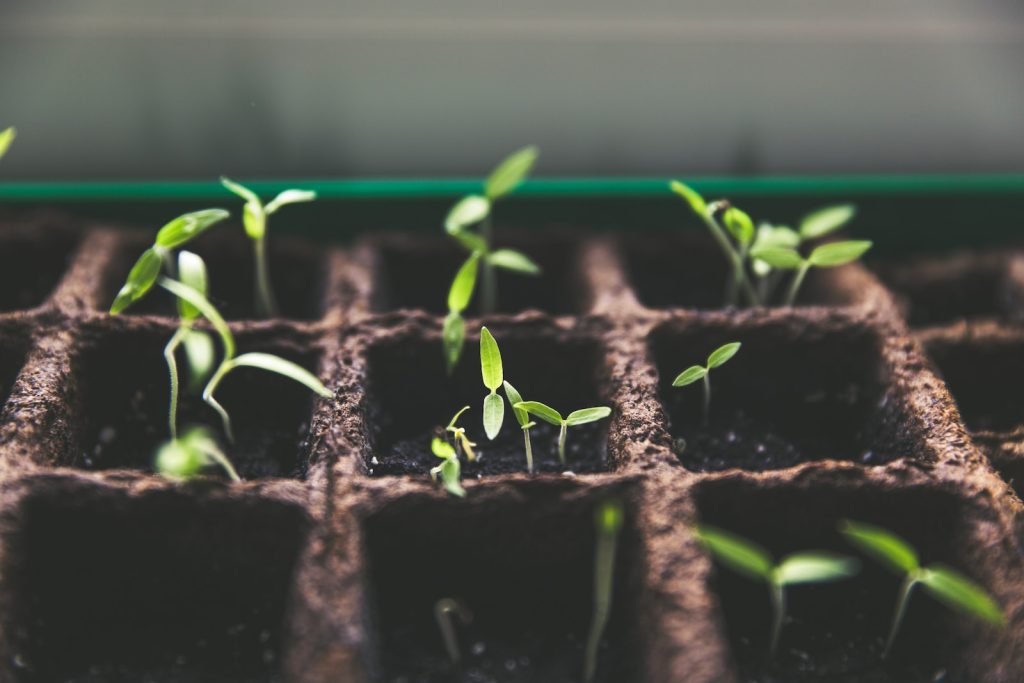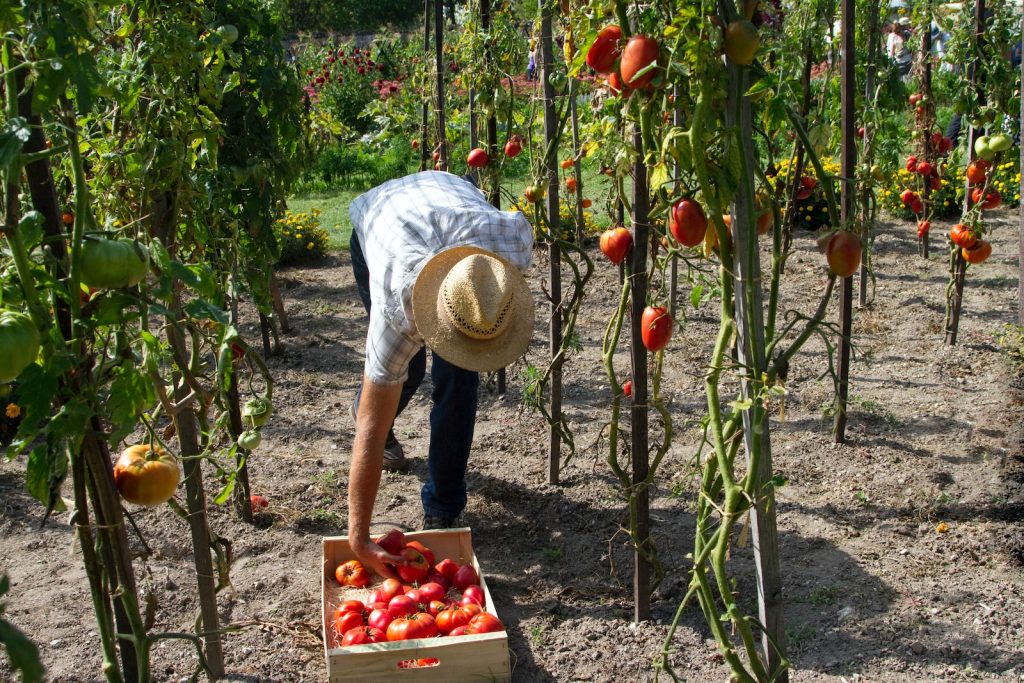Gardening has long been considered a therapeutic activity, but it can also have a meaningful impact on your health. Growing and harvesting your own food can not only provide you with fresh and delicious ingredients, but it can also improve your physical and mental well-being. In this article, we’ll explore the many benefits of gardening for health and offer tips on growing your own food at home. Whether you’re new to gardening or looking to expand your skills, you’ll find plenty of useful information here to help get you started.
Growing your own food provides fresh, nutritious produce for your meals and offers numerous physical and mental health benefits. The physical activity involved in gardening can improve strength, flexibility, and endurance while reducing stress levels. By growing your veggies and fruits with natural techniques, you are assured that they are free from pesticides and chemicals that could have an adverse impact on your health. On the mental side, gardening helps relieve anxiety and depression symptoms while providing a sense of accomplishment and increased self-esteem. Overall, gardening is an excellent way to promote healthy living, essential for long-term well-being.
Benefits of gardening for health
Physical benefits
Gardening is an excellent way to improve your physical health for several reasons. Here are some of the physical benefits of gardening:
- Exercise: Gardening involves a lot of physical activity, including digging, planting, weeding, and harvesting. These activities can help burn calories, improve endurance, and build muscle strength.
- Fresh Air: Spending time outdoors can help you breathe in fresh air, benefiting your respiratory system. Fresh air can also help you feel more energized and alert.
- Exposure to Vitamin D: When you spend time outside in the sun, your body naturally produces vitamin D, which is essential for healthy bones and a strong immune system. Vitamin D can also help improve your mood and reduce the risk of certain diseases.
- Reduced Risk of Chronic Diseases: Regular physical activity, like gardening, can help reduce the risk of chronic diseases such as heart disease, obesity, diabetes, and certain types of cancer.
- Improved Sleep: Spending time outdoors and engaging in physical activity can help improve the quality of your sleep. A good night’s sleep is essential for maintaining good health and overall well-being.
- Reduced Stress and Anxiety: Gardening can also be a great stress-relieving activity. Spending time in nature, engaging in physical activity, and being present in the moment can help reduce stress and anxiety levels.
In conclusion, gardening can provide many physical benefits, including exercise, fresh air, exposure to vitamin D, reduced risk of chronic diseases, improved sleep, and reduced stress and anxiety. So, if you’re looking for a fun and rewarding way to improve your physical health, consider starting your own garden today!
Mental benefits
Gardening is not only great for physical health, but it can also provide many mental benefits. Here are some of the mental benefits of gardening:
- Stress Relief: Gardening is a great stress-relieving activity. Spending time outside, surrounded by nature, can help you feel more relaxed and calm. Engaging in a repetitive task like gardening can also help you feel more centered and present.
- Mindfulness: Gardening can be a form of mindfulness practice. When you garden, you’re focused on the present moment, paying attention to the task at hand and the sensations in your body. This can help you feel more grounded and connected to the world around you.
- Sense of Accomplishment: Growing your own plants and vegetables can provide a sense of accomplishment and pride. Watching your plants grow and thrive can be incredibly satisfying, and harvesting your own food can give you a sense of self-sufficiency and independence.
- Improved Mood: Spending time in nature and engaging in physical activity can help improve your mood. Gardening can be a great way to lift your spirits and reduce feelings of depression or anxiety.
- Connection to Others: Gardening can be a social activity, allowing you to connect with other gardeners and share tips and advice. This can help you feel more connected to your community and create a sense of belonging.
- Cognitive Function: Gardening can also provide cognitive benefits, including improved memory and attention span and reduced risk of cognitive decline in older adults.
Overall, gardening can provide many mental benefits, including stress relief, mindfulness, a sense of accomplishment, improved mood, connection to others, and cognitive function.
Planning your garden

Planning your garden is a crucial step in creating a successful home garden. There are several things to consider when planning your garden, including selecting the right location, choosing the right plants, and designing your garden space. Here are some tips to help you plan your garden effectively:
- Select the Right Location: When choosing a location for your garden, consider factors such as sunlight, soil quality, and accessibility. Most plants require at least 6-8 hours of sunlight daily, so choose a location that receives ample sunlight. Also, ensure the soil is well-draining and has the right pH balance for the plants you want to grow. Finally, consider accessibility, especially if you plan to use raised beds or other garden structures.
- Choose the Right Plants: When selecting plants for your garden, consider the climate in your area and the amount of space you have available. Some plants, such as tomatoes and peppers, require a lot of space, while others, like herbs and lettuce, can be grown in smaller spaces. Additionally, consider whether you want to grow annuals, which need to be replanted each year, or perennials, which come back year after year.
- Plan and Design Your Garden Space: When designing your garden space, consider factors such as aesthetics, functionality, and practicality. Consider how you want your garden to look and feel and how you plan to use the space. Will you need pathways, seating areas, or other structures? Also, consider practical factors, such as irrigation and drainage.
- Start Small: If you’re new to gardening, it’s a good idea to start small and gradually expand your garden as you gain more experience. Choose a few easy-to-grow plants and focus on creating a healthy growing environment.
- Get Creative: Gardening can be a fun and creative activity, so don’t be afraid to experiment with different plant combinations, colors, and textures. Consider incorporating decorative elements like garden sculptures, trellises, or raised garden beds to add interest and visual appeal.
In conclusion, planning your garden is essential to creating a successful home garden. By selecting the right location, choosing the right plants, and designing your garden space, you can create a beautiful and functional garden that provides fresh produce and a space for relaxation and enjoyment.
Growing your own food
Growing your own food is a rewarding experience that can provide you with fresh, healthy produce and a deeper connection to the natural world. If you’re new to gardening, here are the basic steps involved in planting and caring for your vegetables, herbs, fruit trees, and other plants:
- Start with Good Soil: Healthy plants require healthy soil, so start by testing your soil and amending it with compost, manure, or other organic matter as needed. Make sure your soil is well-draining, and consider adding raised beds or containers if your soil is of poor quality.
- Choose Your Plants: Select plants that are suited to your climate and growing conditions, and choose varieties that are known for their vigor, disease resistance, and flavor. Consider growing a mix of vegetables, herbs, and fruit trees to provide a variety of flavors and nutrients.
- Plant Your Garden: Once you’ve selected your plants, it’s time to plant your garden. Follow planting instructions for each plant, including spacing, planting depth, and soil temperature. Water your plants thoroughly after planting.
- Provide Adequate Water: Plants need regular watering to thrive, especially during hot, dry weather. Water your plants deeply and regularly, but avoid overwatering, which can lead to root rot and other problems.
- Fertilize Regularly: Plants require nutrients to grow, so fertilize your garden regularly with a balanced fertilizer or compost tea. Follow instructions carefully, and avoid over-fertilizing, which can burn plants and damage soil.
- Protect Against Pests and Diseases: Monitor your plants regularly for pests and diseases, and take action quickly if you notice any problems. Use organic pest control methods whenever possible, such as companion planting, hand-picking pests, or using natural predators.
- Harvest Your Produce: As your plants grow, harvest your produce regularly to encourage continued growth and to enjoy the fruits of your labor. Harvesting at the right time and in the right way can also help prevent disease and pest problems.
Some common challenges you may encounter when growing your food include pest infestations, plant diseases, and poor soil quality. To address these challenges, consider using organic pest control methods, improving soil quality with compost and other organic matter, and selecting disease-resistant plant varieties. Additionally, monitoring your garden regularly for signs of problems and taking action quickly to prevent further damage is important.
In conclusion, growing your own food is a rewarding experience that can provide you with fresh, healthy produce and a deeper connection to the natural world. Following these basic steps and addressing common challenges, you can create a successful and bountiful home garden that provides delicious, nutritious food for you and your family.
Harvesting and using your produce

Harvesting your homegrown produce is one of the most rewarding aspects of gardening. Knowing when to harvest your crops is key to ensuring that you get the best flavor and nutrition from your produce. Here are some tips on when and how to harvest common garden crops:
- Leafy Greens: Harvest leafy greens such as lettuce, spinach, and kale when the leaves are young and tender. Pick individual leaves or cut the entire plant about an inch above the ground. Use them in salads, sandwiches, and stir-fries.
- Root Vegetables: Harvest root vegetables such as carrots, beets, and radishes when the tops are visibly large, and the roots are the desired size. Gently pull the roots from the soil, careful not to damage them. Store root vegetables in a cool, dry place or pickle them for later use.
- Tomatoes: Harvest tomatoes when fully ripe and have a deep, rich color. Gently twist or cut the stem from the plant, being careful not to damage the fruit. Use them in salads and sandwiches, or make your own pasta sauce.
- Peppers: Harvest peppers when they have reached their full size and have developed a bright, vibrant color. Cut the pepper from the plant with a sharp knife or scissors. Use them fresh in salads or roasts and freeze them for later use.
- Fruit Trees: Harvest fruit when it is fully ripe and has a sweet fragrance. Gently twist or cut the fruit from the tree, being careful not to damage the fruit or tree. Use fresh fruit or preserve it by making jam or jelly.
Ideas on how to use produce
Once you’ve harvested your produce, it’s time to enjoy it! There are many ways to use and preserve your homegrown fruits and vegetables. Here are some ideas:
- Cooking: Use your fresh produce in a variety of recipes, from salads to soups to stir-fries. Cooking with fresh produce allows you to enjoy your harvest’s full flavor and nutritional benefits.
- Preserving: Preserve your produce by canning, freezing, or dehydrating. Canning is a great way to preserve fruits and vegetables for later use while freezing and dehydrating can help you stock up on nutritious snacks and ingredients.
- Sharing: Share your bounty with friends, family, and neighbors. Give away extra produce to those in need, or host a garden party to celebrate your harvest.
In conclusion, harvesting and using your homegrown produce is a rewarding experience that allows you to enjoy your garden’s full flavor and nutritional benefits. Following these tips on when and how to harvest your crops and ideas for using and preserving your produce, you can make the most of your home garden and share the joy of fresh, healthy food with others.
Conclusion
Gardening is more than just a hobby; it is a powerful tool for improving physical and mental health. From providing exercise and fresh air to reducing stress and promoting mindfulness, gardening offers numerous benefits that can positively impact your well-being. Additionally, growing your own food is a cost-effective way to access fresh produce and allows you to control what goes into your food.
If you are new to gardening, starting a garden may seem daunting. However, with a bit of planning and effort, anyone can start their own garden, no matter how much space they have. From container gardening to raised bed gardening, there are many options for growing your own produce at home.
So, if you’re looking for a way to improve your health and well-being while enjoying the satisfaction of growing your own food, give gardening a try! Start with a few herbs or vegetables, and gradually expand your garden as you become more comfortable. With a little patience and effort, you’ll enjoy the benefits of homegrown produce in no time!






























